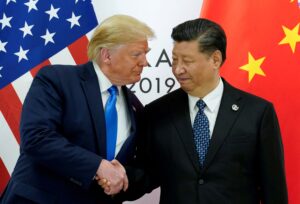
Beijing is approaching the possibility of a summit between Chinese President Xi Jinping and U.S. President Donald Trump with caution, as trade disputes and geopolitical uncertainties continue to shape bilateral relations. Reports indicate that early discussions are underway for a potential meeting in June, but concerns over economic stability and U.S. policy shifts have left China wary of the outcome.
Rising Trade Disputes and Tariff Concerns
China has been the target of multiple trade actions by the U.S., with the Biden administration previously imposing tariffs on Chinese goods, a policy that President Trump has signaled he may escalate further. The U.S. has also threatened to introduce tariffs of up to 50% on buyers of Russian crude oil, a move that could significantly impact China, a major importer of Russian energy.
According to reports from the World Trade Organization, China faced 198 trade investigations in 2024, nearly half of all global trade disputes for the year. The growing number of trade restrictions has heightened Beijing’s skepticism about engaging in high-level talks without assurances of a shift in U.S. trade policy.
Diplomatic Uncertainty Surrounding the Summit
While preliminary discussions for a potential “birthday summit” between Trump and Xi are taking place, analysts note that the unpredictability of U.S. diplomatic strategies makes it difficult for China to gauge what the meeting could achieve. Past engagements between the two leaders have been marked by shifting rhetoric, with previous trade negotiations often resulting in abrupt changes in U.S. policy direction.
Concerns Over Global Economic Stability
Amid escalating trade tensions, President Xi recently met with top multinational executives in Beijing, urging them to support global supply chain stability. China has been vocal about its concerns that further U.S. trade actions could disrupt global industry and economic cooperation.
Given these factors, Beijing remains cautious about the potential benefits of a Trump-Xi summit, weighing the risks of engagement against the possibility of further economic and geopolitical friction.




